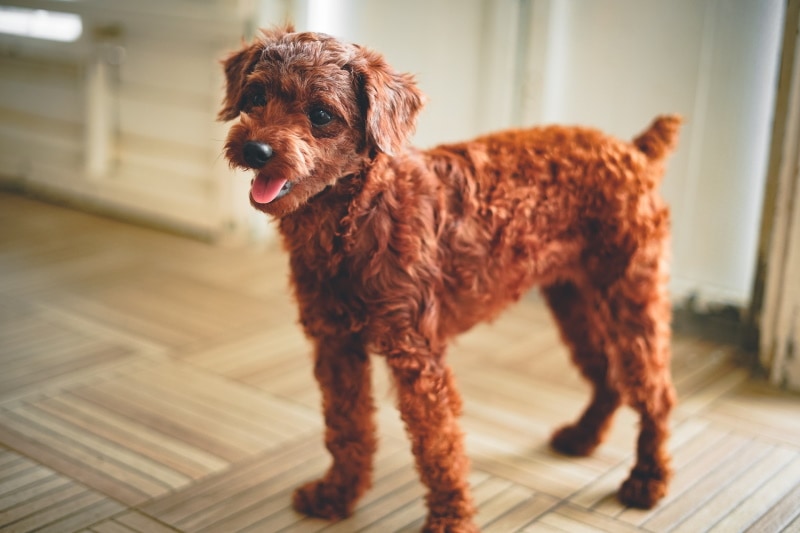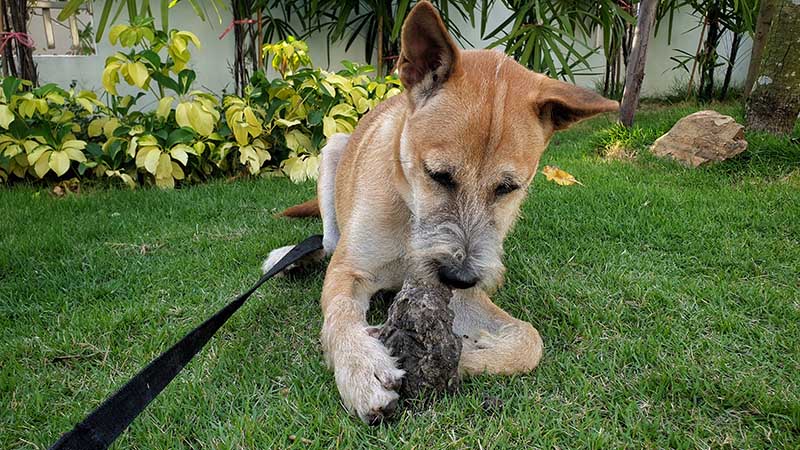Teacup Cavalier King Charles Spaniel: Pictures, Info, Temperament & Traits
By Kit Copson
Updated on
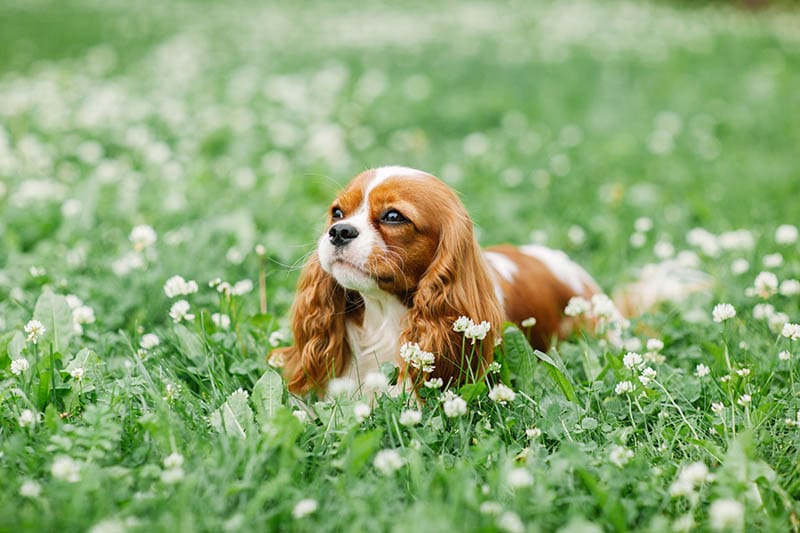
The Cavalier King Charles Spaniel is a popular toy breed that ranked number 15 on the AKC’s most popular dog breeds list in 2021. Despite the fact that the Cavalier King Charles Spaniel is already a tiny dog, some breeders produce “teacup” versions, as is the case with several other dog breeds like Yorkshire Terriers, Chihuahuas, and Pugs.
Teacup dogs are bred to be unnaturally small and breeders accomplish this by mating litter runts—dogs that sometimes have birth defects. According to Dr. Judy Morgan,1 a holistic veterinarian, the health risks for teacup dogs are “significant”—this is something to be aware of if you’re planning to purchase a teacup Cavalier King Charles Spaniel from a breeder.
In this post, we’ll explore the history of the breed and some interesting facts, and share more about the health risks that teacup Cavalier King Charles Spaniels face.
The Earliest Records of Teacup Cavalier King Charles Spaniels in History
Though interest in “teacup” dogs is quite a modern phenomenon, Cavalier King Charles Spaniels go back a long way. Their ancestors were the Blenheim Spaniels that were King Charles II’s companion dogs and that feature in paintings of the said King. However, images of these dogs appeared in art even before King Charles II’s time and they may even have originated in ancient China or Japan.
One of their uses was as a “lap warmer” and it was even believed that they could help treat colds, as evidenced by a prescription written for an English Queen advising her to place a Cavalier King Charles Spaniel on her lap for that very purpose. They were also considered useful for keeping plague-causing fleas away, as the fleas were drawn to the dogs instead of their owners.
In later centuries, the Cavalier King Charles Spaniel’s appearance started to develop. Flat-faced breeds became very popular in the 19th century, so the Cavalier King Charles Spaniel’s muzzle became shorter. These dogs are known as “King Charles Spaniels” or “English Toy Spaniels”. As a result, the long-muzzled Blenheims began to vanish.
In the 20th century, a man named Roswell Eldridge offered a reward to breeders who could revive the original long-muzzled Blenheim Spaniels. Though not taken very seriously at first, eventually, Elridge’s breeding program started to take off and the resulting dogs were called “Cavalier King Charles Spaniels”.
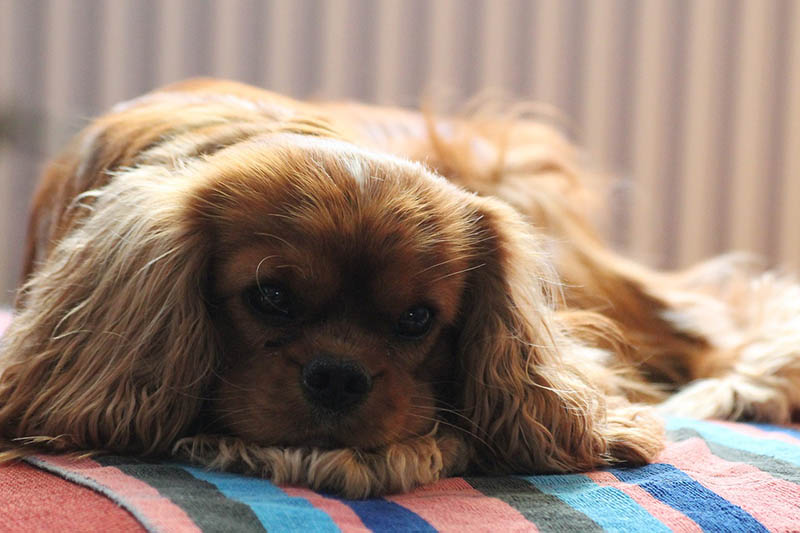
How Teacup Cavalier King Charles Spaniels Gained Popularity
The Cavalier King Charles Spaniel’s ancestors first became popular with the nobility during the reign of King Charles II. In addition to the King and other members of the nobility, they were popular with ladies who kept them as lap dogs.
That said, they weren’t simply limited to keeping people warm—the larger Spaniels were also bird hunters. This mix of being companionable and athletic meant that they catered to a variety of needs.
As mentioned above, the Cavalier King Charles Spaniel in its original form almost went extinct but interest in the “old type” was revived during the 20th century thanks to the efforts of enthusiasts like Roswell Eldridge and Amice Pitt. From here, Cavalier King Charles Spaniels began to grow in popularity, likely due in no small part to their gentle, affectionate, and placid natures.
Famous Cavalier King Charles Spaniel owners past and present include Frank Sinatra, Sylvester Stallone, Ronald Reagan, Courtney Cox, and Liv Tyler.
When it comes to teacup dogs, according to veterinarians, they became popular after Paris Hilton’s teacup Chihuahua “Tinkerbell” was brought to the public’s attention. Today, teacup dogs are very popular and breeders can make thousands of dollars from selling just one of them.
Formal Recognition of Teacup Cavalier King Charles Spaniels
The teacup version of the Cavalier King Charles Spaniel is not recognized by the American Kennel Club. The AKC only recognizes the Cavalier King Charles Spaniel, which wasn’t officially recognized until 1995 despite the fact that the Cavalier King Charles Spaniel Club was formed back in 1928.
The Kennel Club first recognized the Cavalier King Charles Spaniel as a breed in its own right—separate from the King Charles Spaniel—in 1945. The American Kennel Club accepts four King Charles Spaniel colors as standard (black and tan, black and white, Blenheim, and ruby), but the only markings possible are tan.
Top 4 Unique Facts About the Teacup Cavalier King Charles Spaniel
1. Teacup Breeds Are Prone to Several Health Conditions
Some of the risks for teacup dogs include but are not limited to low body temperature, hypoglycemia, respiratory issues, collapsed trachea, digestive issues, blindness, heart defects, and seizures. Teacup dogs are also known for being more fragile in general—they get cold much more easily than other dogs and it’s easier for their bones to break.
2. Cavalier King Charles Spaniels Are Therapeutic
A sweet and gentle nature makes the Cavalier King Charles Spaniel a popular choice as a therapy or emotional support dog. It also makes them sought after by families with children.
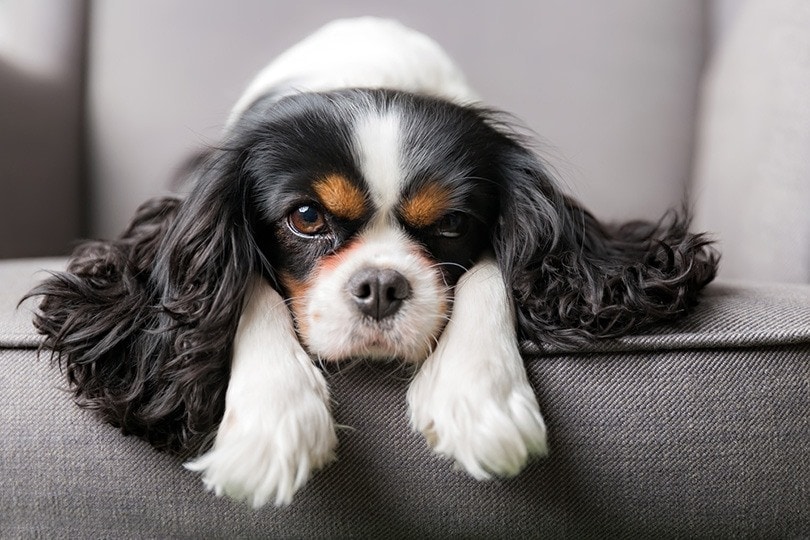
3. Cavalier King Charles Spaniels Are Excellent Hunters
Don’t be fooled by the sweet Cavalier’s love of a good cuddle and snuggling up on the couch—their hunting instincts are still very much present. When they do give chase, they become remarkably focused and even their owners sometimes have difficulty calling them back.
4. Cavalier King Charles Spaniels Accompanied Charles II Everywhere
According to legend, King Charles II had to have a minimum of three Blenheim Spaniels accompany him wherever he went. The King’s adoration for his dogs even stirred some discontent, with some claiming that Charles cared more about his dogs than his Kingly duties.
Does a Teacup Cavalier King Charles Spaniel Make a Good Pet?
Cavalier King Charles Spaniels, no matter what size, make excellent pets. They’re generally quiet, well-mannered, sweet-natured dogs that don’t make a lot of noise and often make excellent dogs for families with children and other pets. As mentioned above, teacup Cavalier King Charles Spaniels are prone to certain conditions, as are other teacup breeds.
Unfortunately, even regular-sized Cavalier King Charles Spaniels are prone to certain health issues including patella luxation, mitral valve disease, and hip dysplasia, amongst other conditions. For these reasons, it’s important to be vigilant and keep an eye out for symptoms of illness if you do get a Cavalier King Charles Spaniel. That said, their life expectancy is pretty long—between 12 and 15 years.
Final Thoughts
To recap, Cavalier King Charles Spaniels date back to before the reign of King Charles II, though they’re best known for having been companion dogs for the said King and other nobles.
Despite a dip in popularity in the 19th century due to the preference for short-muzzled dogs, Cavalier King Charles Spaniels were eventually revived and their popularity has not waned since. Today, the Cavalier King Charles Spaniel is one of the most popular dog breeds in the US and UK, and no doubt elsewhere, too!
To reiterate, we strongly exercise caution if you’re planning on acquiring a teacup Cavalier King Charles Spaniel due to the health risks associated with teacup dogs.
Featured Image Credit: Tatyana Pronina, Shutterstock



